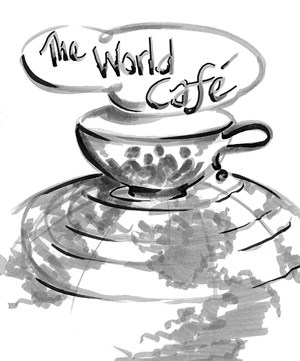World Café is a fun, flexible, and scalable technique for group conversations that leads to creative solutions to complex problems. World Café has some similarities to Open Space Technology: both techniques work for groups ranging from a few people to a few thousand; both are frameworks that support individuals and interactions. World Café is useful for generating and communicating ideas, making decisions, and even doing hands-on work. We’ll be teaching product owners how to use it in our upcoming Advanced Certified Scrum Product Owner (A-CSPO) workshop.
How It Works
The facilitator breaks the room into groups, then sets them to explore a set of related topics, one per table. Each table has a host whose job is to stay with the table and provide continuity while the groups discuss the topic. The other participants rotate between tables on a regular schedule, perhaps every 15-30 minutes. The idea is that those who travel between tables will cross-pollinate ideas between the topics and bring fresh perspectives. By participating in each topic, the participants come to have a holistic understanding of the main issue, and are able to understand each sub-issue within this context. In the last round, people have the option of returning to a previous table so there is opportunity for closure and continuity.
Read the full article…


